It’s a tricky and highly technological time for parenting. Although many of today’s parents weren’t raised with a lot of the technology that exists today, they have to help their children navigate the waters without their own childhood experiences to reference. Moreover, the internet has brought about risks that expose children to dangers that simply didn’t exist in the past.
So how are parents raising these tech-oriented generations? We surveyed 1,001 parents in the U.S. to find out. We learned when children begin to use technology, as well as how parents are managing to keep them safe. Continue reading to see what we discovered.
Monitor moms and dads
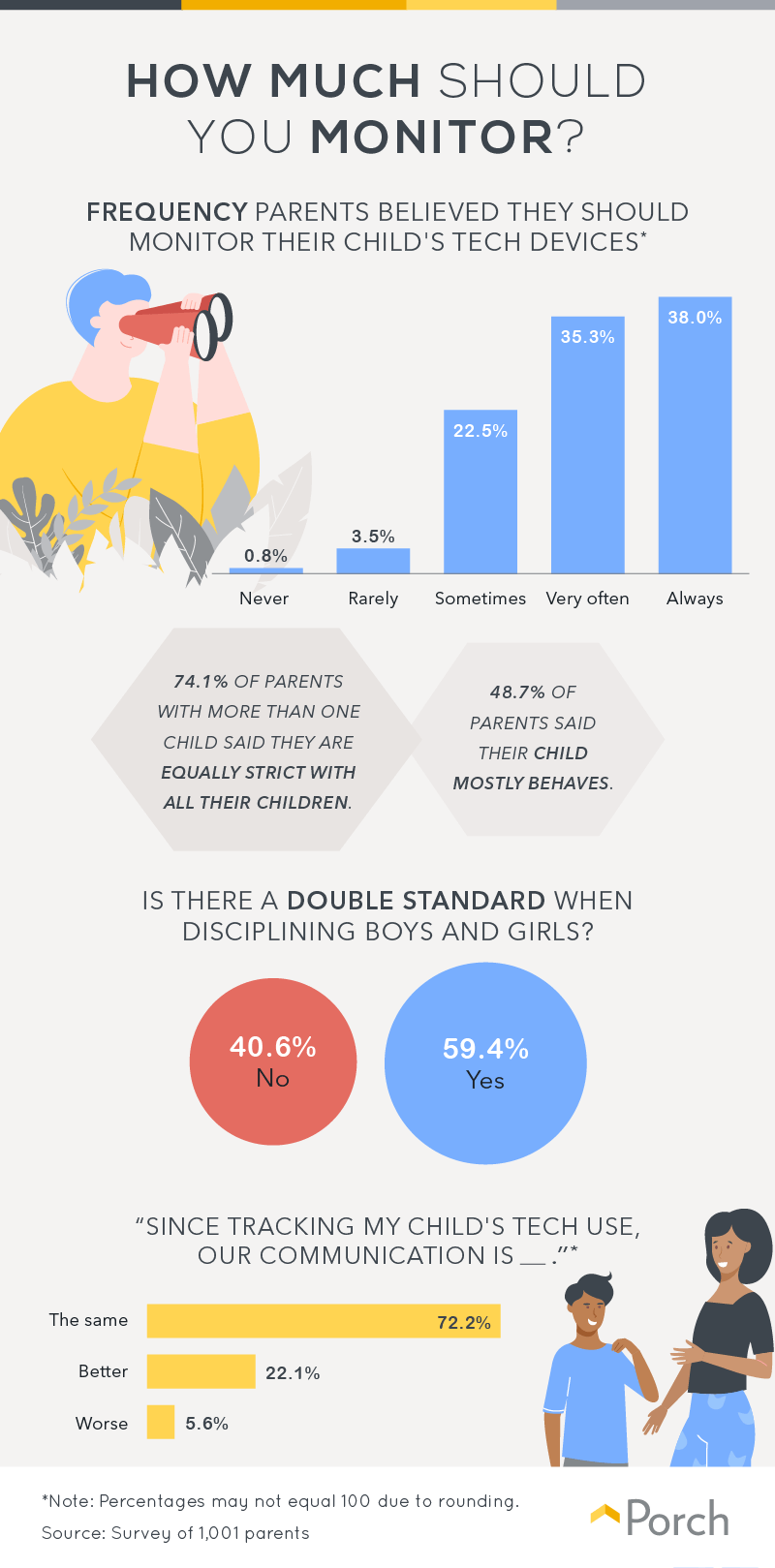
We asked parents how often they felt it was necessary to monitor their child’s tech devices. Thirty-eight percent answered “always,” and another 35.3 percent said “very often.” As it turns out, however, these responses might have some gender bias.
Fifty-nine percent of the parents surveyed agreed there is a gender bias when it comes to disciplining boys and girls. However, another 74.1 percent admitted they are equally strict with all their children. Fortunately, many parents deemed their children well-behaved.
On another positive note, tracking children’s technology doesn’t often cause tension: 94.3 percent of parents said communication with their child was better or the same since they began tech monitoring practices.
Raised on tech
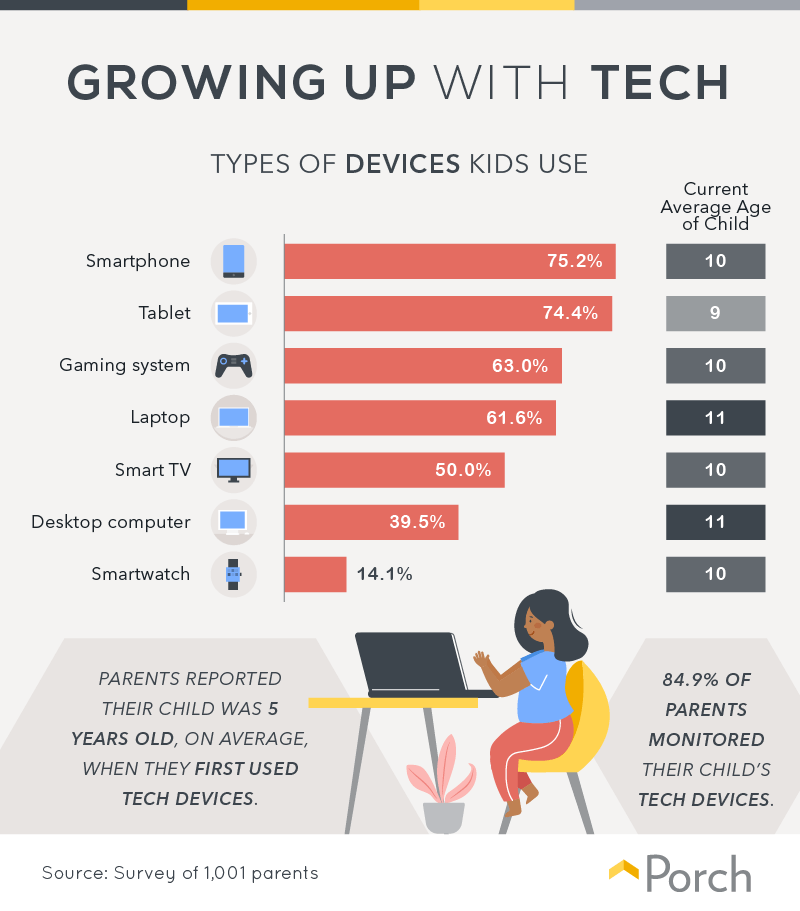 American parents spend upward of six figures raising children today, and one of the key costs is evidently technology. Seventy-five percent of the parents surveyed said their kids use smartphones, which have a higher average cost than ever. What’s more, is that the average age of children using these phones was just 10 years old.
American parents spend upward of six figures raising children today, and one of the key costs is evidently technology. Seventy-five percent of the parents surveyed said their kids use smartphones, which have a higher average cost than ever. What’s more, is that the average age of children using these phones was just 10 years old.
Children owned tablets at the even-younger age of 9. This age is possibly reflective of the popularity of tablets as self-soothing tools, although their use is highly controversial. Some researchers claim using technology too early can cause “brain hacking,” essentially causing a faulty takeover of the brain’s pleasure and reward systems. Parents said their children started to use technology at an average age of 5, but 84.9 percent of parents also chose to monitor their children’s devices.
Spending time with screens
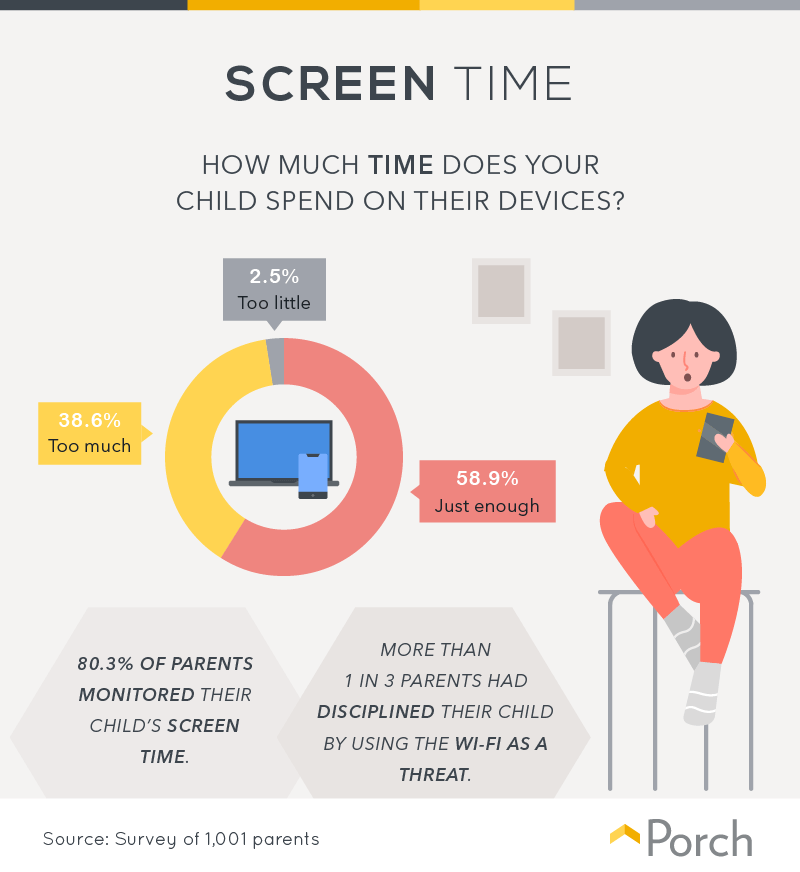
Despite scientific warnings about too much screen time, 58.9 percent of parents felt their children spent just the right amount of time using technology, and another 2.5 percent said their children didn’t use technology enough! Still, 38.6 percent felt their children’s technology use was overly frequent.
Often, parents even used Wi-Fi as a means to discipline their children, offering its privileges as a reward or revoking them as punishment. In fact, 1 in 3 parents reported having done one or the other before.
Talking about texting
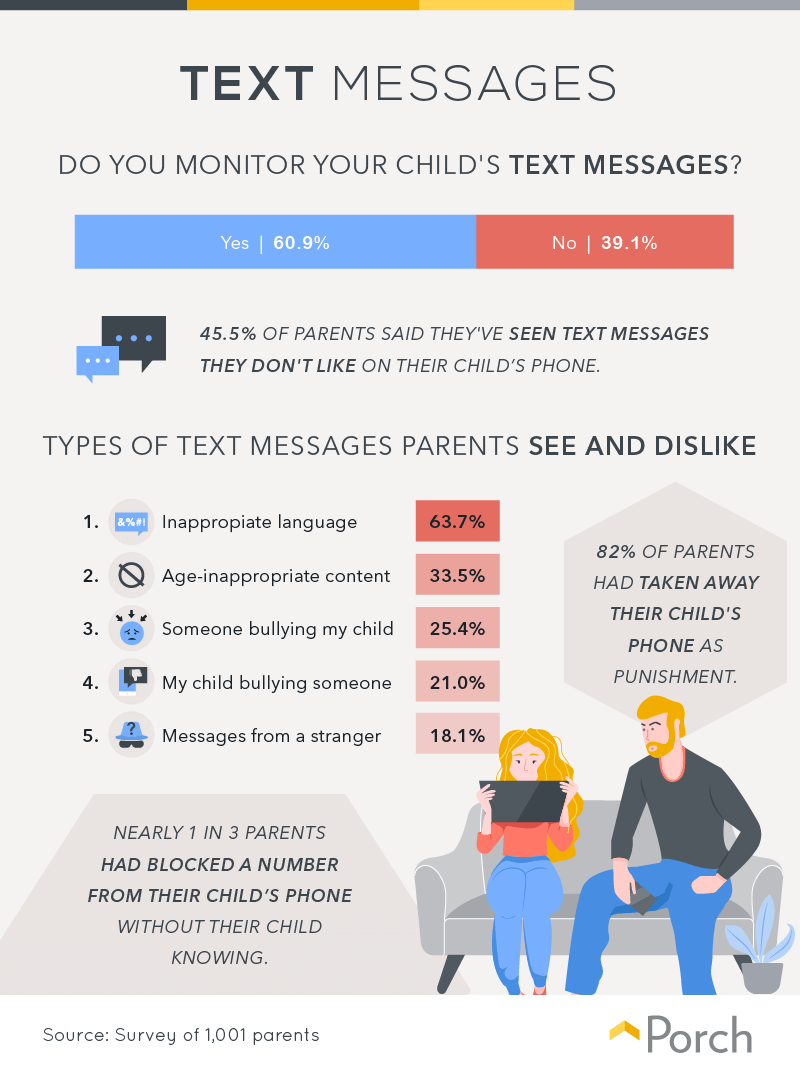
Most parents—60.9 percent—admitted to reading their children’s text messages. In other words, parents admittedly gained access to what their children and other children had to say through tech monitoring. And about half of the time—45.5 percent—they were disappointed with what they found.
Most often, parents were disappointed by the inappropriate language they read in their child’s texts (63.7 percent), followed by age-inappropriate content (33.5 percent) and even someone bullying their child (25.4 percent). And when parents found something they didn’t like, revoking Wi-Fi wasn’t their only form of punishment: 82 percent of parents had taken away their child’s phone at some point, as well.
Navigating the net
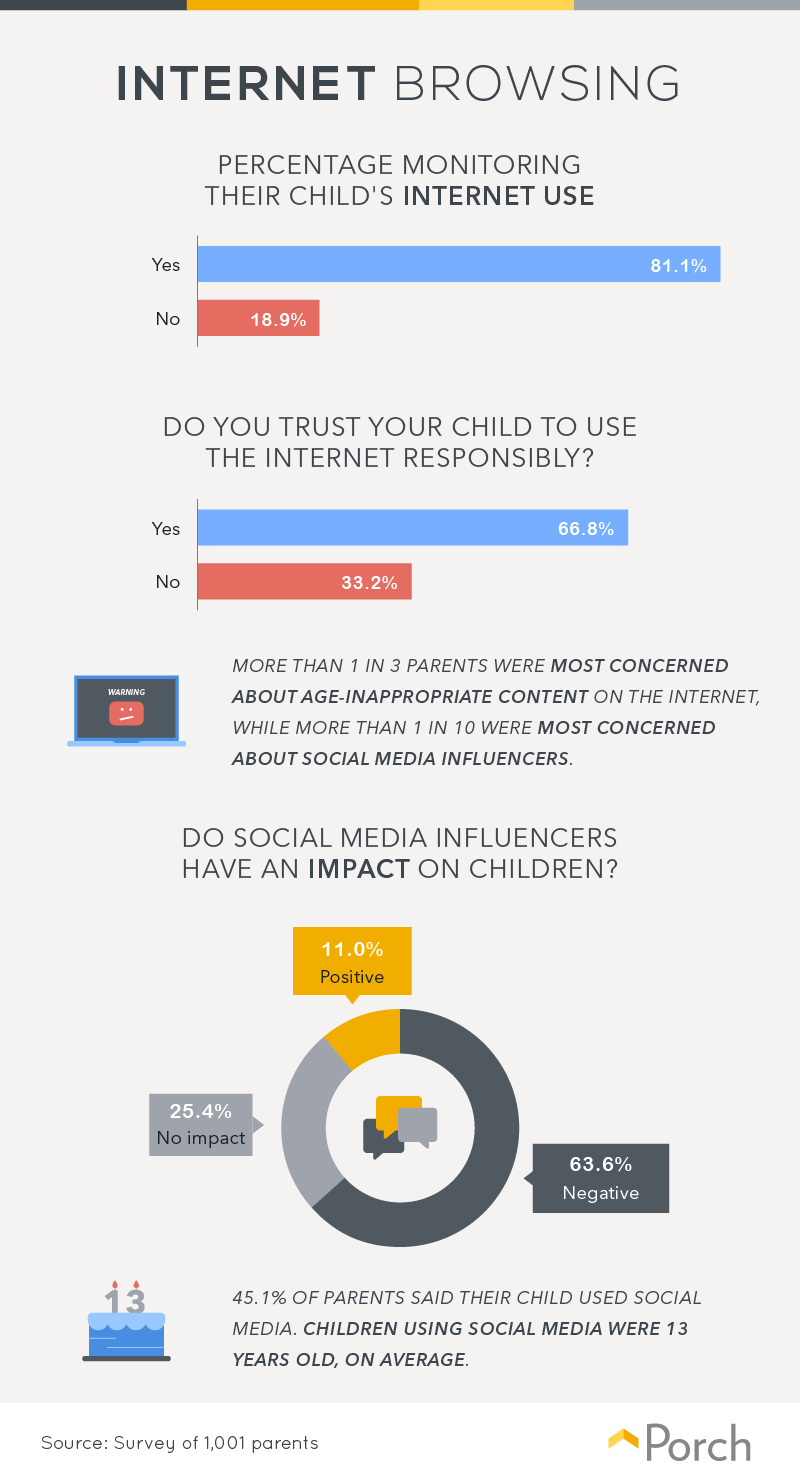
Eight in 10 parents surveyed monitored their children’s internet use in some way, although 66.8 percent also said they trusted their children to use the internet responsibly. While internet content truly runs the gamut, it has become a critical component of education for children as well as adults. In fact, many impoverished families are at a disadvantage with how heavily education has come to rely on technology and internet access. Some reports estimate that millions of teens in the U.S. are unable to complete their homework because of a lack of access to technology.
But education wasn’t what most of the parents surveyed were concerned about. Instead, more than 1 in 3 parents were concerned about age-inappropriate content, while another 10 percent were concerned by the prevalence of social media influencers. Only 11 percent of parents felt social media influencers had anything close to a positive effect on their children’s lives.
Location, location, location
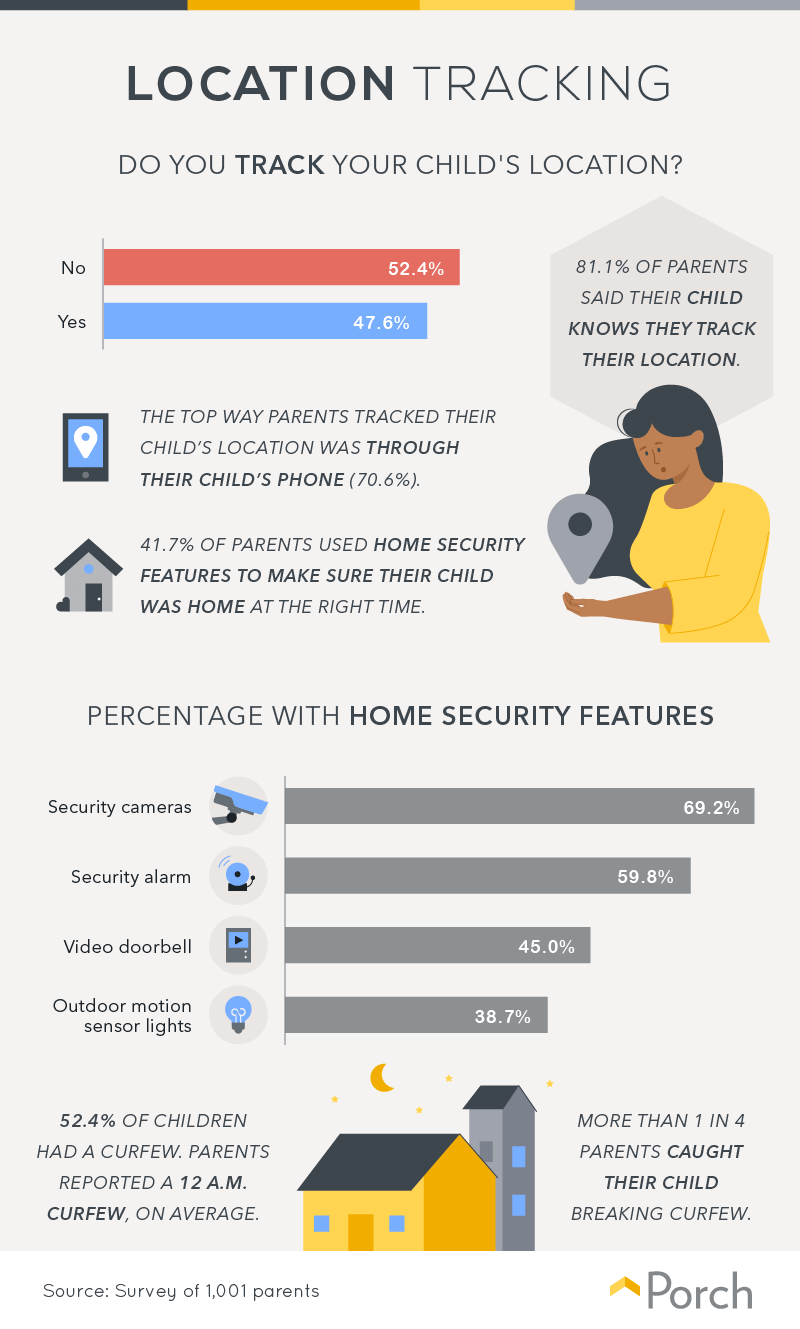
Over 52 percent of parents tracked their child’s location—yet another heavily debated behavior of modern parents. Controversy aside, 81.1 percent of parents said their child was aware of being tracked. Most often, they tracked the location through their child’s smartphone. Although this offers an additional level of safety, it may also be convenient for specifying pickup, depending on the age of the child.
Many parents chose to arm their homes with security features to keep their children safe. Roughly 69 percent had security cameras installed, nearly 60 percent utilized alarms, and 45 percent purchased video doorbells. Some common safety features didn’t involve technology at all: 52.4 percent of children had a curfew, having to return home by midnight, on average. Nevertheless, more than 25 percent of parents still caught their children breaking curfew at least once.
Technological safety
Although data reveals parents are doing the heavy lifting when it comes to internet safety, internet users must protect and secure their own technology as well. Outside of tech, of course, physical safety must always be paramount. And there are many instances where we at Porch can help. Maintaining your home can involve risk if you’re not absolutely sure of who is entering, seeing your valuables, and fixing whatever issues you may have. That’s why every handyman, plumber, mover, technician, and contractor on Porch is thoroughly vetted. Head over to Porch today if your home needs some safety and love.
Methodology and limitations
To collect the data shown above, we conducted a survey of 1,001 respondents. To qualify for this survey, respondents were required to have at least one child age 18 or younger who uses tech devices. The respondent pool was 54 percent female and 46 percent male. The data were calculated to exclude outliers. We did this by finding initial averages and standard deviations for the data. Then, the standard deviation was multiplied by two and added to the initial average. Any data point above the calculated number was then excluded from the data.
Because the survey relies on self-reporting, issues such as telescoping and exaggeration can influence responses. An attention-check question was included in the survey to make sure respondents did not randomly answer.
Fair use statement
Children’s safety is paramount, especially regarding technology, so we urge you to share this research with whoever it may benefit, as long as it’s for noncommercial purposes and you link back to this page.

